It’s possible that 11,990 feet above sea level might not be high enough for you. Maybe you’d like to brag that you’ve conquered a 13’er during your visit to Colorado. If so, there’s a convenient solution, located right next to Loveland Pass: it’s the Mount Sniktau Trail.
In the photo above, you see almost all of this trail. It climbs, then climbs some more, and then finishes with some climbing, to reach the very top of Mount Sniktau, elevation 13,218 (give or take a few feet — I’ve seen its elevation listed as several different numbers).
Of course, every journey to the top of a mountain begins with just one step. And here are a couple dozen of them. These stone steps take you up a small hill, on the east side of US 6, at Loveland Pass. You’ll also find a staircase on the west side of the highway — that’s the start of a different trail that runs along the top of a different ridge. So, climb those steps…
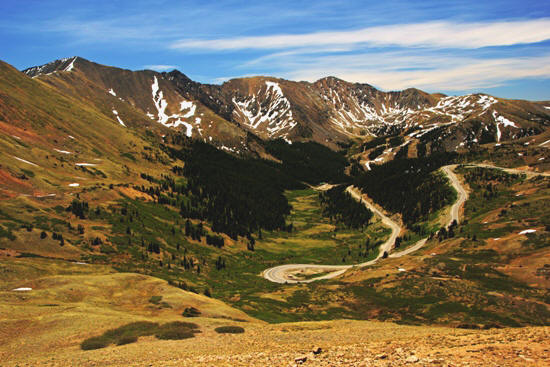
… and then keep going uphill. In mere moments, you can enjoy this great view of US 6, descending towards Interstate 70, near the spot where the freeway enters the Eisenhower Tunnel to go underneath the Continental Divide.
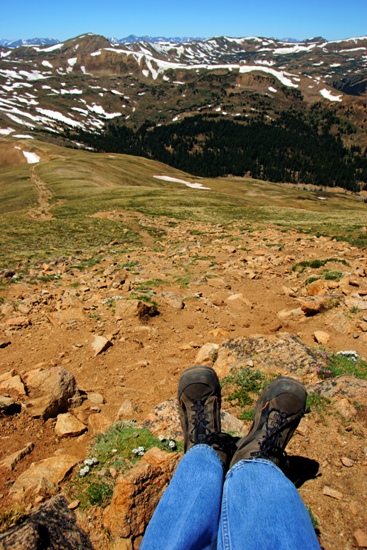
The first part of the Mount Sniktau Trail is amazingly steep. It feels like that staircase never ended — but the trail up the hill isn’t as simple as climbing stairs. It’s rocky and loose in places, and while it’s not especially dangerous, you could step carelessly as your legs get weaker.
Oh, and there aren’t many good places to sit.
In mid-June, wildflowers were just beginning to appear above the tree line. I’d guess that there will be many more, by July.
The first phase of the hike up Mount Sniktau is this long, straight-uphill stretch. Once it’s behind you…
… there’s a good chance to take a break. Several piles of rocks serve as wind shelters in this flat area, so you can take a few minutes to catch your breath.
Once you’re ready, head north…
… towards what would appear, at first, to be the summit. Don’t get excited, it’s not. You will need to scramble a little up the rocks to get to the top.
After the scramble, the terrain flattens out a little, for just a moment, then you’re climbing again. This picture looks back onto the other side of the false summit.
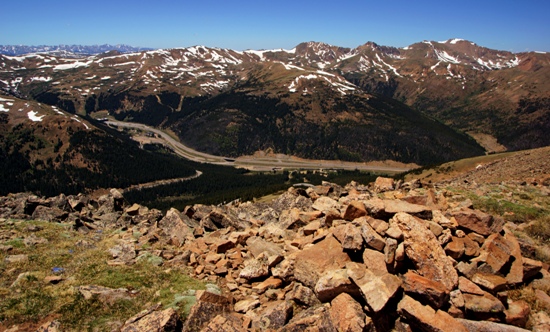
Throughout this area, you’ll have a fantastic view of Interstate 70. Over on the left, you can see the entrance to the Eisenhower Tunnel.
A short distance beyond the false summit, there’s another summit, which at the time I believed was the real summit of Mount Sniktau. Now, I’m fairly certain that this spot is known as Point 13,152′ (or at least, that’s what ColoradoGuy calls it).
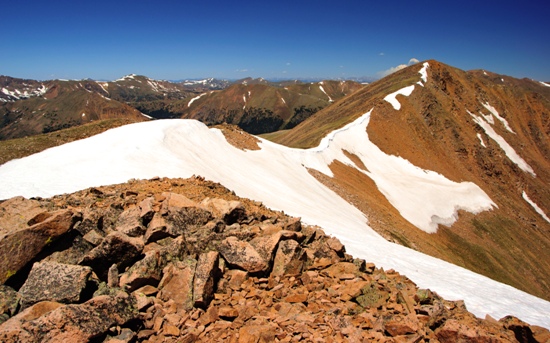
The real summit of Mount Sniktau is further to the north, beyond another saddle. But like I said, at the time, I thought this was a different mountain, and I was very content with my current location.
Okay, that’s not entirely true. I wasn’t content at all. It was miserable up there. The wind was easily tropical-storm strength, and unrelenting, with gusts that could knock me over if I wasn’t braced for them. Even if I had known that Mount Sniktau was further away, I probably wouldn’t have continued. Instead, I hunkered down behind a wind shelter for a few minutes to recover from the ascent.
When I finally was ready to face the wind again, I snapped a few photos looking south. The highest point in this photo is Torreys Peak, with another ridge in between there and here.
Click on the image for a larger version.
A couple more panoramas show off part of the view of endless peaks…
Click on the image for a larger version.
… and Interstate 70, far below.
By the time I made it back to the car, I had been hiking for about five hours (on the Mount Sniktau trail, and the trail on the other side of US 6). I needed a break, so I drove back to my hotel in Silverthorne, before heading south towards Hoosier Pass.

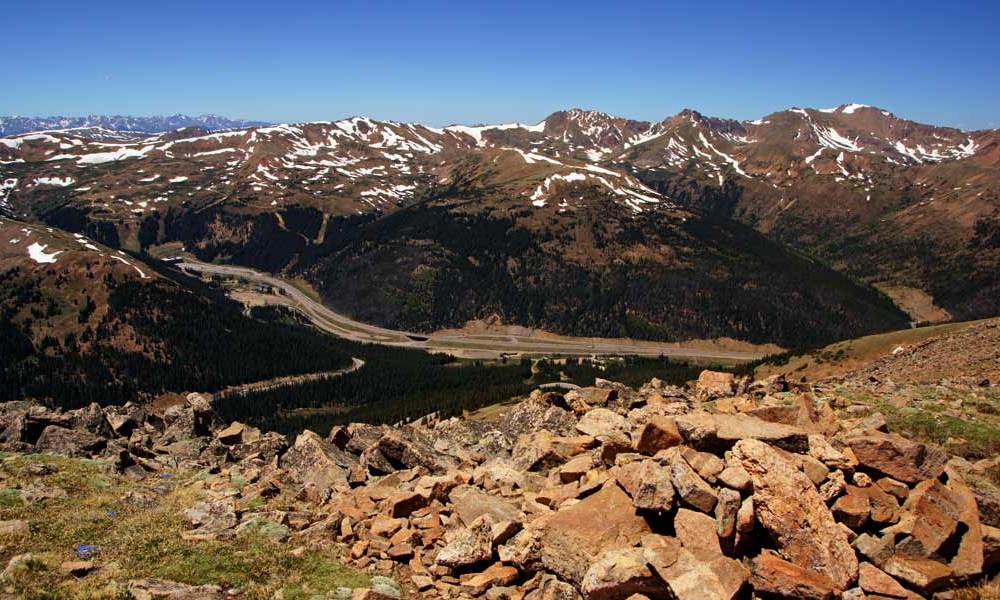
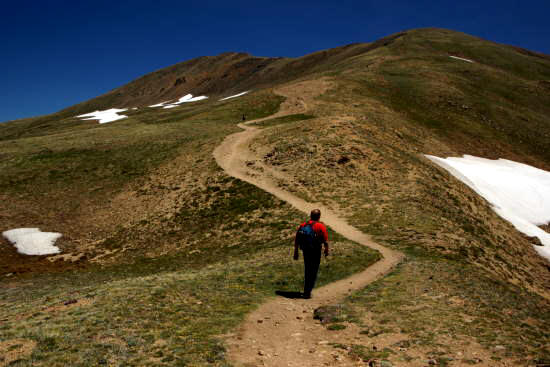
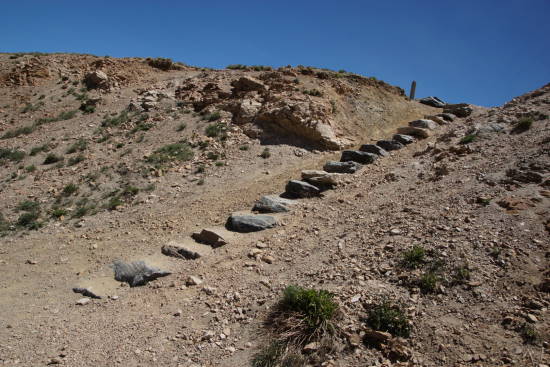
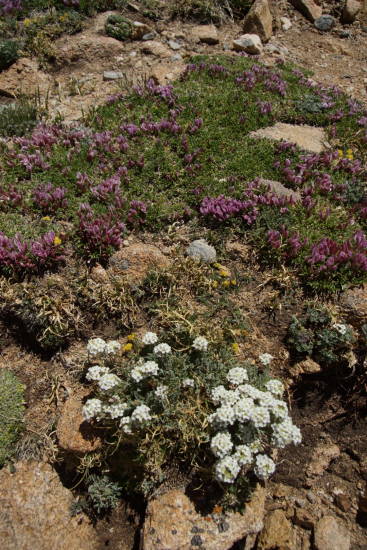
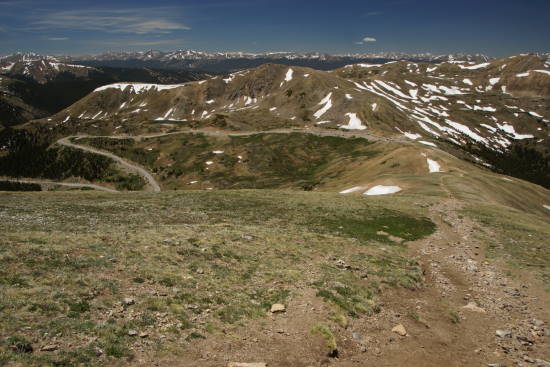
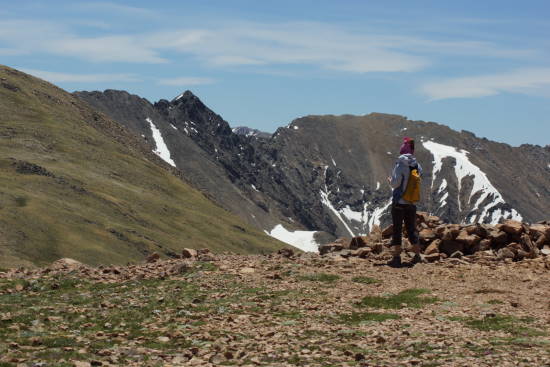
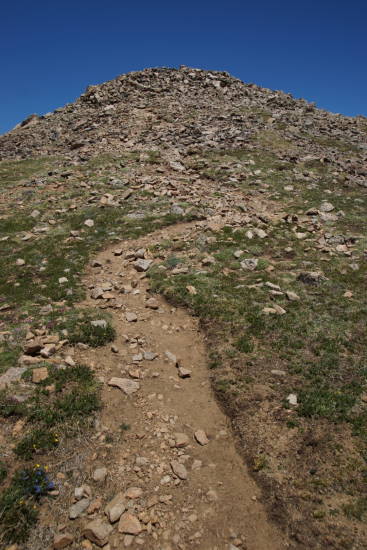
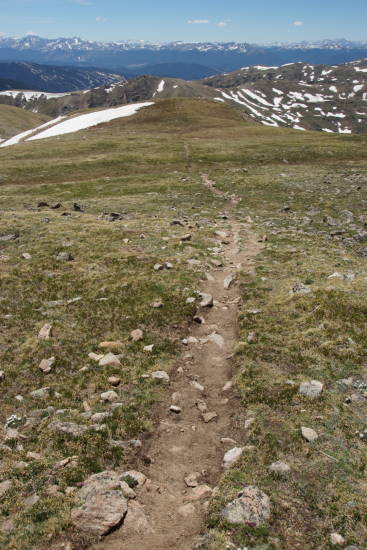
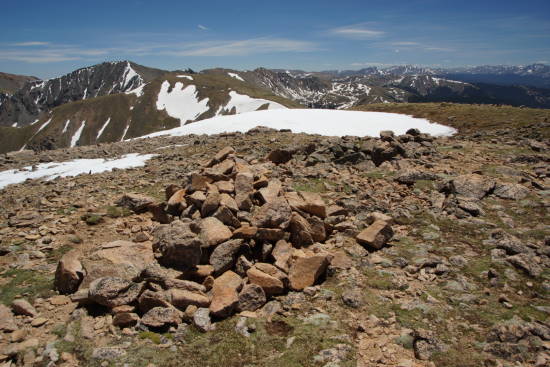
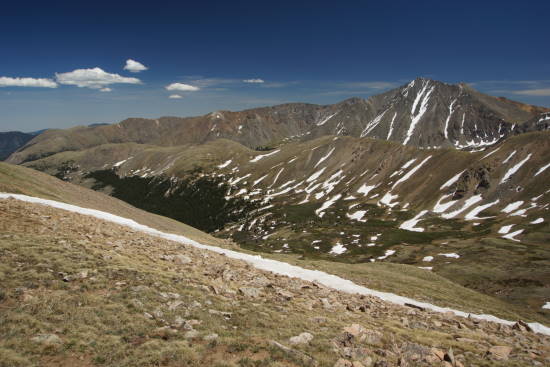


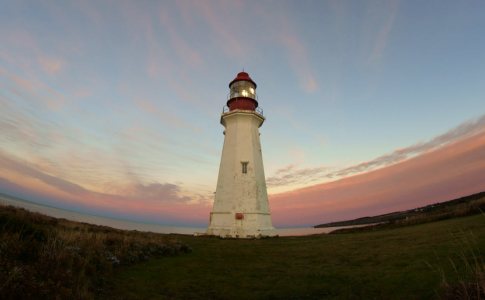
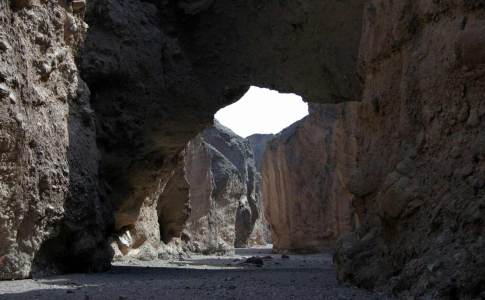
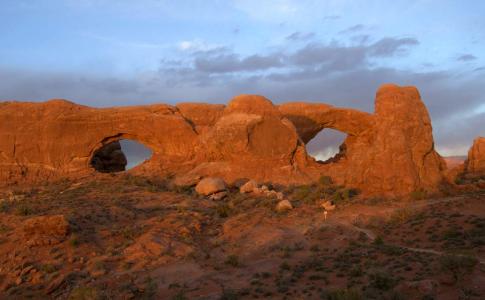
thanks for your hiking journal, i did Grizzly peak today, the wind was like a hurricane the entire time.